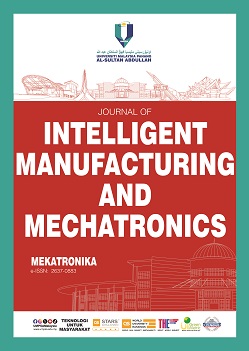Haptic Feedback Wristband for Tactile Graphics Reader
DOI:
https://doi.org/10.15282/mekatronika.v5i2.9966Keywords:
Tactile graphics, Haptic feedback, Assistive device, BlindnessAbstract
Traditionally, blind and visually impaired (BVI) readers face challenges in interpreting tactile graphics due to the need for specialized skills, training, and often external assistance. Existing audio feedback systems also present limitations, including susceptibility to surrounding noise and imprecise guidance. Therefore, this paper presents the design of an assistive device for tactile graphics reader using a haptic feedback system. This device takes the form of a digital watch with an adjustable strap, ensuring compatibility with various wrist sizes. It incorporates four strategically placed vibrating mini-motor discs that deliver directional signals to the user's hand through precise vibrations, guiding their exploration towards the area of interest on the tactile graphic. Pilot testing involving blindfolded sighted readers was conducted to assess the effectiveness of this haptic feedback wristband. The results of the testing revealed that participants could successfully discern direction cues and distinguish varying levels of vibration intensity. Notably, the success rates exceeded 70% for navigation and 85% for vibration intensity recognition.
Downloads
Published
Issue
Section
License
Copyright (c) 2023 The Author(s)

This work is licensed under a Creative Commons Attribution-NonCommercial 4.0 International License.




